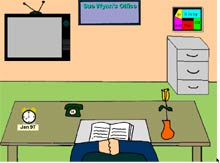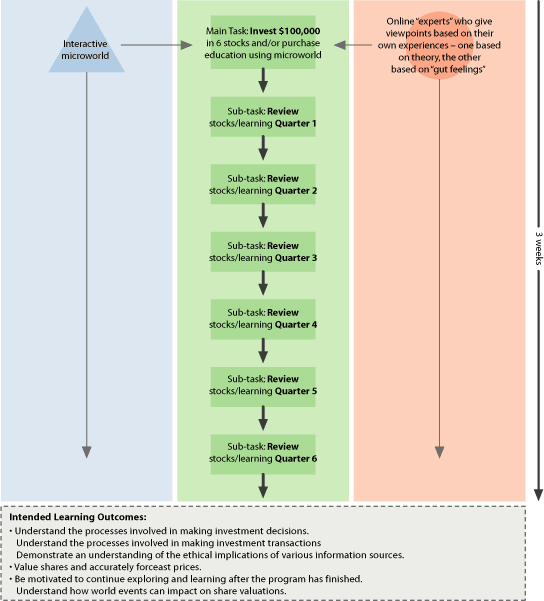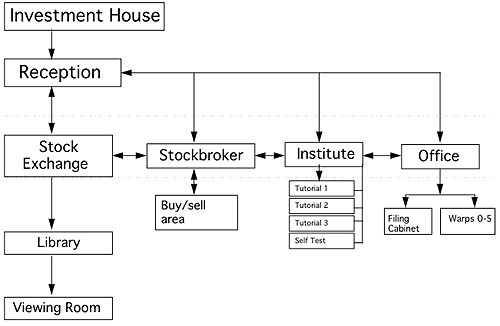|
ACCESSIBLE RESOURCES
The main resource of this learning design is the interactive
multimedia program. There are 6 quarters represented in the
program. As the student "warps" to the next quarter,
the materials contained in each area are updated. Learning
resources are available as follows:
Reception: This area contains a person
who can be clicked on to give hints and tips on how to get
started with the program, suggestions on where to go first,
etc.
Stock Exchange: This area contains a viewing
room which shows the current prices for the 6 stocks, as well
as two people who can act as online "experts" giving
the student the benefit of their experience. One of the experts
relates her advice to the theory, the other uses common wisdom.
This part of the program also has a library containing historical
data on each of the 6 stocks as well as background information
on the economy.
Stockbroker: The stockbroking area is where
the students go to buy and sell shares. It contains a rack
with flyers on market updates, economic forecasts, brochures
on each of the companies, and some off-beat information such
as "investment by the stars". The students can also
view their portfolios in this area.
The Institute: This area allows students
to enrol in formal education for which they are charged a
fee. The theory is divided into three tutorials and there
is a free self-test. Quiz-type tests are embedded in each
of the tutorials. Once students enrol in, and pay for, a tutorial,
the information is automatically delivered to the filing cabinet
in their office.
The office: This area is personalised to
each student. When they first enter the microworld they register
at the reception desk and all their information is personalised.

Figure 2: Example of "The Office"
It is via their office that they can move through the quarters
by clicking on the clock. The television, telephone and filing
cabinet all deliver information in various forms. The book
on the desk, when clicked on, delivers the personal portfolio
of the student.
RESOURCES IN CONTEXT
The students have the opportunity to arrive at their learning
from a number of perspectives. The students can watch news
items, listen to "experts", read information and
watch their own progress as they warp through the program.
They have the opportunity to learn from experience. In the
first two quarters they have the unique opportunity of backtracking
to reinvest based on what they learn after they warp. This
enables them to gain some benefit from moving into the future.
However, this prop is removed after the third quarter.
VARYING THE RESOURCE SET
The students need access to a computer with a CD-Rom. There
is also a paper-based instruction sheet in case they have
trouble finding the online help. Everything provided is deemed
essential.
|


